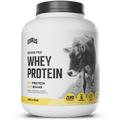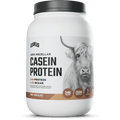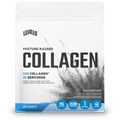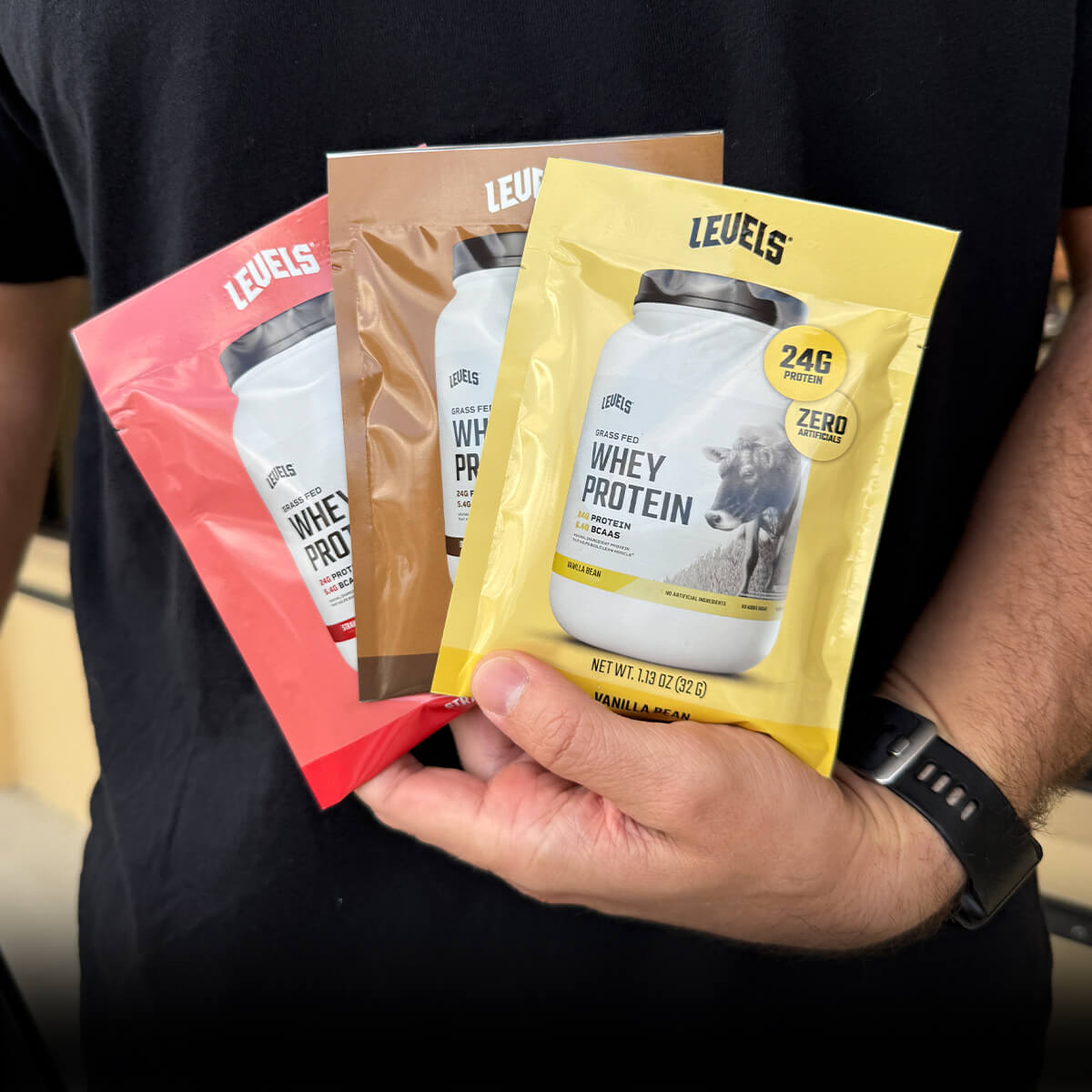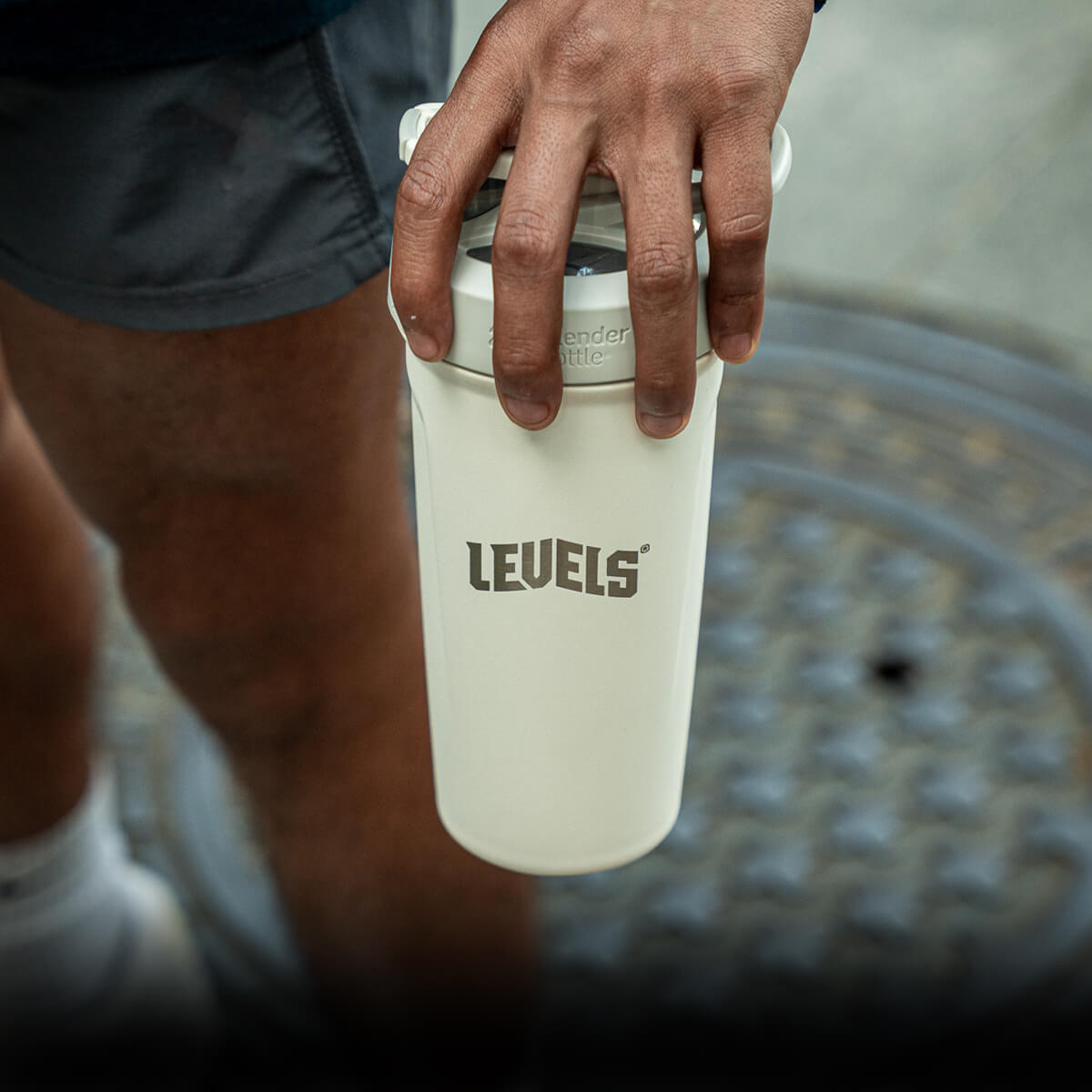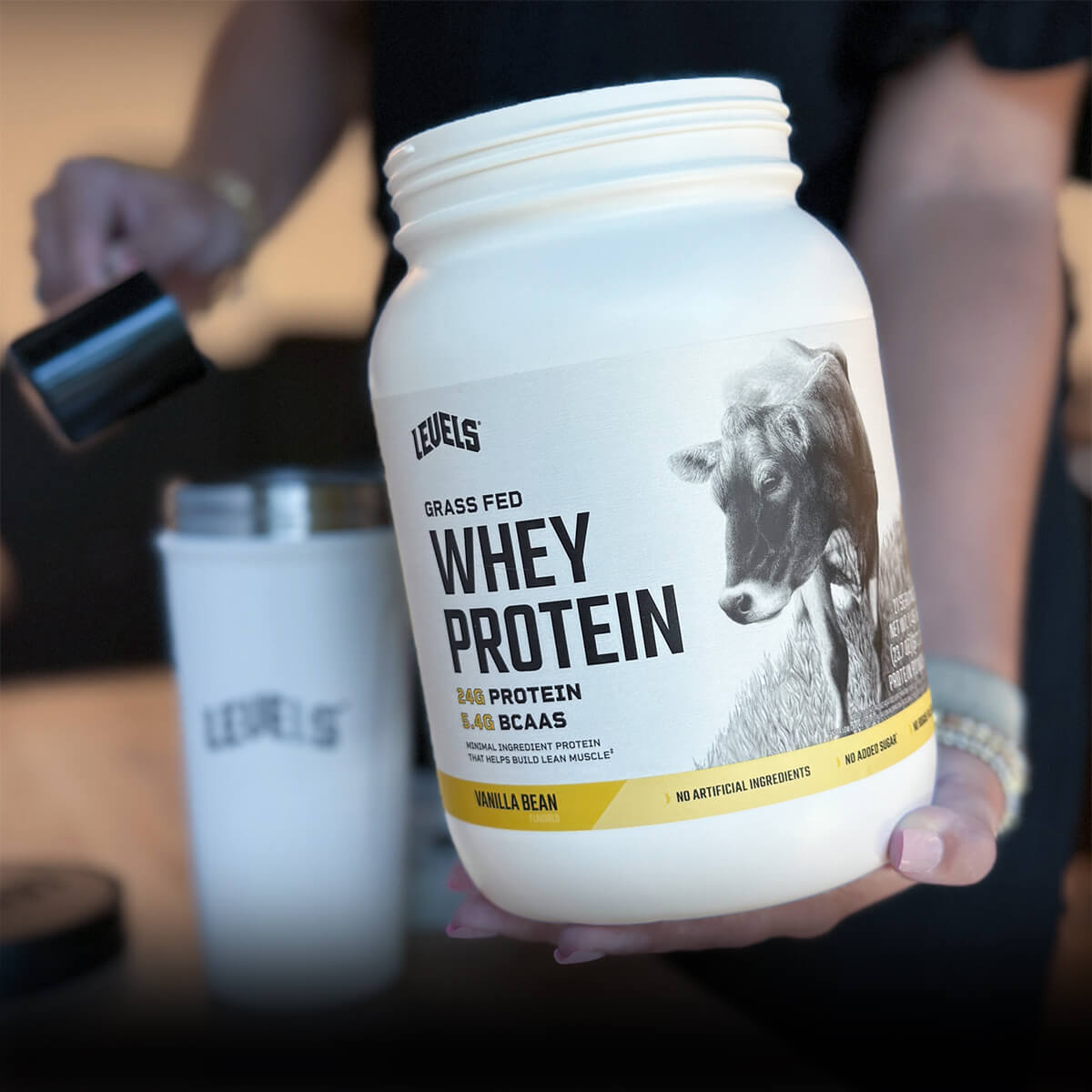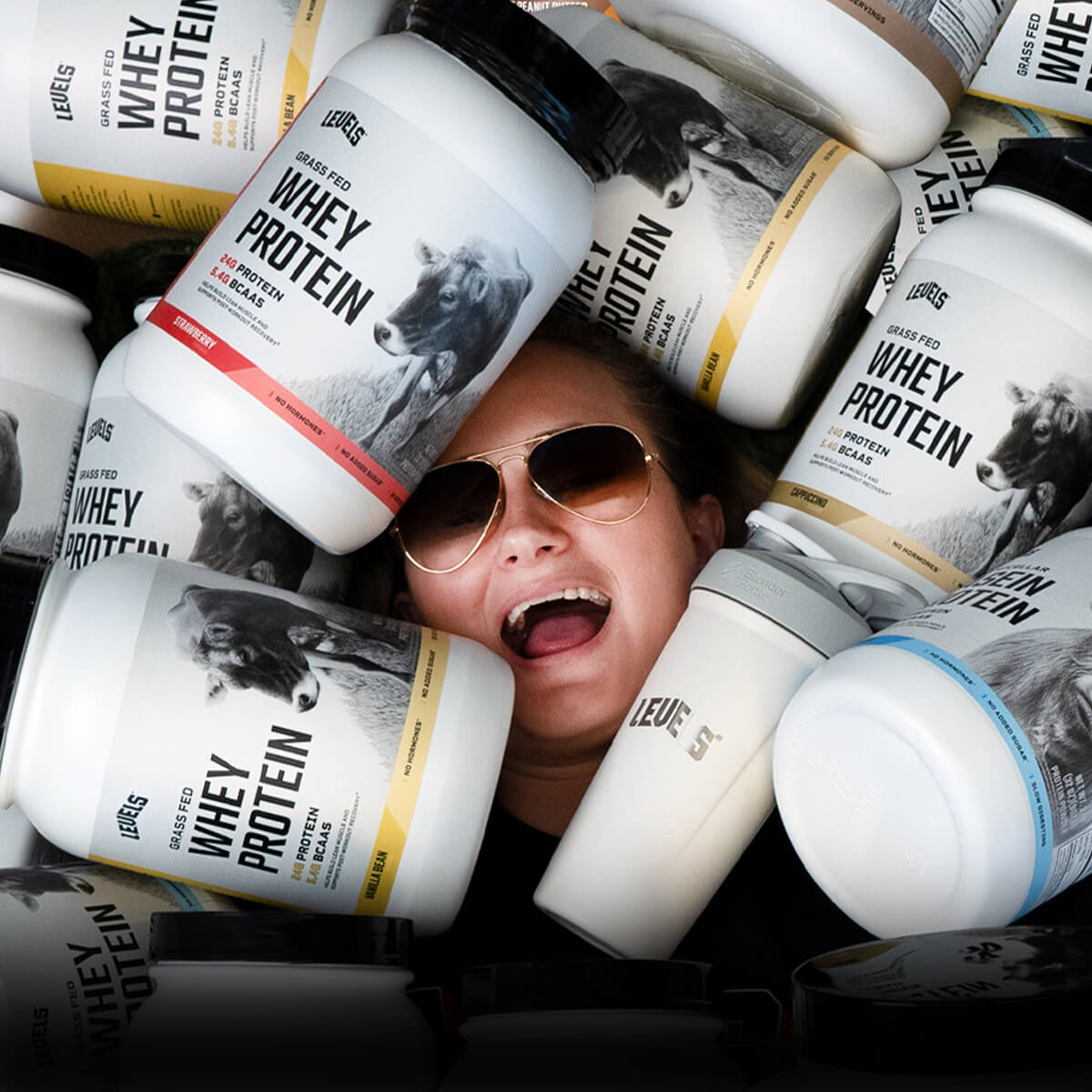Creatine is one of the few health and fitness supplements supported by over 500 peer-reviewed studies[*].
And not only that, but research suggests it’s also safe and effective for nearly everyone — whether old or young, sick or well, sedentary or active.
But what’s the best form of creatine to use? Does one type of creatine work better than another, or have fewer side effects?
In this article, we compare the more exotic creatine hydrochloride (HCL) to the better-studied creatine monohydrate.
Keep reading to learn creatine facts and benefits, the differences between creatine HCL versus monohydrate, how other types of creatine stack up, and which one is the best choice for your goals.
What is Creatine?
Creatine is a naturally-occurring compound in your body that contributes to energy production during physical activity.
Additionally, it’s a sports supplement proven to enhance athletic performance.
At the cellular level, creatine is necessary for your survival. One way to obtain creatine is through your diet, particularly by eating meat[*].
However, your body can also make creatine from the amino acids arginine, glycine, and methionine — therefore, because your body produces it, it’s not considered an essential nutrient[*].
In your body, the primary role of creatine is to recycle energy. It works by helping to regenerate adenosine diphosphate (ADP) back into adenosine triphosphate (ATP) during physical activity[*].
Creatine increases the energy available to your muscles during strenuous exercise, which enables you to generate more force.
Additionally, supplementing with creatine results in the ability to sustain power output for longer[*][*].
4 Scientific Benefits of Creatine
- Creatine helps you sprint faster, lift heavier, and achieve more reps[*][*].
- When combined with weight training, creatine boosts lean mass gains[*][*].
- Creatine may boost mental performance, too[*].
- Taking creatine supplements helps protect brain cells from harm, and may reduce brain damage from traumatic brain injuries by up to 50%[*].
As you can see, few supplements offer the range of health- and performance-enhancing benefits that creatine does.
Furthermore, it’s thoroughly-studied and very inexpensive compared to most supplements. And research shows creatine is safe for nearly everyone, from infants to seniors[*].

However, with up to a dozen different forms of creatine on the market, you may be wondering which is the best form to take.
Fortunately, in the next section, we’re going to take a closer look at how the two most common forms of creatine compare, starting with how they’re different from one another.
Creatine Monohydrate vs. HCL: What’s the Difference?
Creatine monohydrate is the most common form of creatine, and it’s also the type of creatine typically used in research.
Essentially, if you’ve ever read a study about the benefits of creatine, the chances are good that it was a study performed using creatine monohydrate.

The name “creatine monohydrate” comes from the fact that this type of creatine includes one molecule of water (H2O). The water portion comprises around 12% of the weight of creatine monohydrate.
Along with creatine monohydrate, another common (and related) form of creatine is creatine anhydrous, also called creatine base. Creatine anhydrous is the same as creatine monohydrate, except with the water molecule removed.
In other words, creatine anhydrous is 100% pure creatine, while creatine monohydrate is about 88% pure creatine. Due to its higher concentration, it’s more common in creatine capsules.
However, creatine anhydrous turns back into creatine monohydrate in aqueous (watery) environments (such as your stomach)[*][*].
In contrast to creatine monohydrate, creatine HCL consists of creatine base with an added hydrochloride (HCL) structure.
As a result, creatine HCL is more acidic than the monohydrate form.
Additionally, some supplement manufacturers claim that creatine HCL has additional benefits or advantages compared to creatine monohydrate.
What Scientific Research Says
Since the FDA often turns a blind eye to supplement claims, manufacturers can claim virtually anything they want about creatine HCL.
But obviously, just because someone says something doesn’t make it accurate.
Here is a verbatim example of a widely-repeated internet claim about creatine HCL:
“Research shows that when subjects consume the same amounts of creatine HCL and creatine monohydrate, the creatine HCL is absorbed by the intestines around 60% better than creatine monohydrate.”
Which sounds great, but where’s the supporting research? None is cited.
In truth, there isn’t any peer-reviewed scientific research in humans showing that creatine HCL absorbs better or has any other advantages over creatine monohydrate.
Although we can’t say there are no additional benefits to the HCL form, we can say that no one knows for sure.
Cost-Effectiveness
Now, let’s step back from the science and take a look at the brass tacks: what’s the cheapest, most cost-effective type of creatine?
The answer is definitely creatine monohydrate.
Even if creatine hydrochloride absorbs more efficiently than monohydrate (which isn’t proven and appears unlikely), it typically costs 5-10 times more.
Put differently, you’ll save up to 80-90% on costs by using the proven monohydrate form.
Conversely, if HCL absorbs twice as well as monohydrate and you can take half as much for the same effects — which would be surprising, to say the least — you’re still paying around 2.5 to 5 times more per serving.
Convenience
As supplements go, taking creatine is pretty convenient to begin with. Mixing a powder with water or juice isn’t exactly rocket science.
However, because it’s more acidic, creatine HCL does mix slightly easier with liquids: it’s more water-soluble than monohydrate.
Therefore, the HCL form has a minor edge for mixability over the monohydrate form.
Alternatively, you can also try using hot water, or purchasing micronized (finely-ground) creatine monohydrate for easier mixing.
Athletic Performance
There aren’t any studies on the effects of creatine HCL on athletic performance.
On the other hand, over 500 separate peer-reviewed papers demonstrate or discuss the beneficial properties of creatine monohydrate[*].
Should you stay away from creatine HCL altogether? Not necessarily, because the chances are high that when you consume HCL, it loses the hydrochloride structure and turns into monohydrate as you digest it.
But again, no one knows for sure — there’s a lack of research.
The prospect that creatine HCL is ineffective is unlikely, and you can always experiment for yourself.
Or, if you want the sure thing, stick with creatine monohydrate.
Purity and Safety
As far as purity, creatine HCL and monohydrate are tied. Neither type is more likely to be impure, as long as you choose a reputable company (preferably one that doesn’t make unsupported claims).
And regarding overall safety, creatine is an incredibly safe supplement. Researchers have found that for healthy people, even high doses of 30 grams per day are safe for up to 5 years (and perhaps longer)[*].
A plethora of studies demonstrate the safety of creatine monohydrate, but there’s no reason to believe the HCL form is any less safe.
Regardless, you should always speak to your doctor before you begin a new supplement, especially if you have a medical condition, take medication, or are pregnant.
Side Effects
Generally speaking, most people don’t get any side effects from taking creatine.
And when side effects do occur, they’re typically minor gastrointestinal side effects such as bloating or upset stomach.
However, if you’ve experienced these side effects, you might want to consider creatine HCL. Because it mixes more easily into water, it may be gentler on your stomach.
Also, creatine side effects are most likely to occur during a loading phase. Since the creatine loading phase isn’t necessary, feel free to skip loading if you experience unpleasant symptoms.

What About Other Forms of Creatine?
Creatine monohydrate and HCL are the two most popular forms of creatine, but there are plenty of other offerings on the market. Here’s what peer-reviewed research says about them:
- Buffered creatine has no demonstrated benefit over monohydrate, but costs more[*].
- Liquid creatine breaks down into creatinine over time, making it more expensive and less effective than powdered creatine monohydrate[*].
- Creatine ethyl ester is less effective than monohydrate for increasing muscle creatine levels[*].
- Magnesium-chelated creatine appears to be comparable to creatine monohydrate, but isn’t proven to be more effective[*].
- Creatine malate has no proven advantage over creatine monohydrate, and it tastes bitter.
- Creatine nitrate is more water-soluble, but no more effective than creatine monohydrate[*].
- Creatine citrate is more water-soluble than creatine monohydrate, but comparable in effectiveness[*].
- Creatine pyruvate may absorb better than creatine monohydrate, but is far more expensive[*].
- Sodium creatine phosphate is about 50% creatine by weight and has barely been researched[*].
Did you notice a common theme? Overall, there’s a lack of good scientific evidence to support alternative forms of creatine.
In fact, no other form of creatine is as well-studied as creatine monohydrate. Not even close!
And they’re all pricier, with no known advantages. Some even have their own drawbacks, such as bitter taste or poor absorption.
Finally, because the water solubility and absorption are not limiting factors in the effectiveness of creatine, the fact that some types of creatine mix or absorb better is more-or-less meaningless, practically-speaking.
Bottom line: if you’re willing to spend a bit more money on creatine for faster results, consider using a loading phase instead of buying overpriced “designer” creatine.
The Bottom Line: Creatine HCL or Creatine Monohydrate?
There’s no question that creatine monohydrate is the reigning champ.
It’s safe, well-studied, and proven to enhance your performance.
That said, creatine HCL might be worth a try if you experience an upset stomach when using creatine monohydrate.
There’s also a possibility that, in the future, studies may demonstrate unique benefits from taking creatine HCL or another alternative form of creatine.
But you probably shouldn’t hold your breath.
- Are you new to creatine supplementation? Read How & When to Take Creatine (Plus 4 Reasons to Take It).
- Or, if you’re looking for faster results from creatine, check out Creatine Loading: How To Do It and Is It Necessary?
